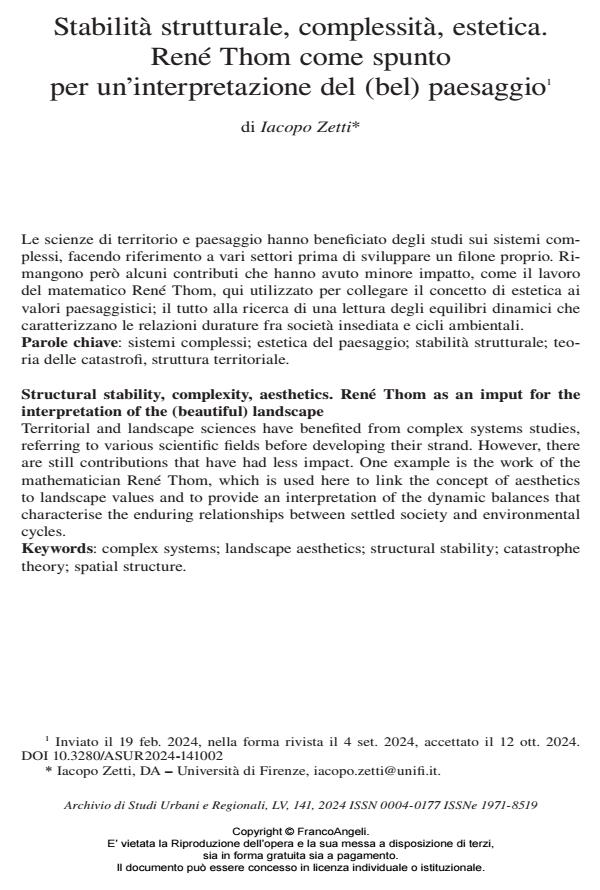Stabilità strutturale, complessità, estetica. René Thom come spunto per un’interpretazione del (bel) paesaggio1
Titolo Rivista ARCHIVIO DI STUDI URBANI E REGIONALI
Autori/Curatori Iacopo Zetti
Anno di pubblicazione 2025 Fascicolo 2024/141
Lingua Italiano Numero pagine 24 P. 11-4 Dimensione file 206 KB
DOI 10.3280/ASUR2024-141002
Il DOI è il codice a barre della proprietà intellettuale: per saperne di più
clicca qui
Qui sotto puoi vedere in anteprima la prima pagina di questo articolo.
Se questo articolo ti interessa, lo puoi acquistare (e scaricare in formato pdf) seguendo le facili indicazioni per acquistare il download credit. Acquista Download Credits per scaricare questo Articolo in formato PDF

FrancoAngeli è membro della Publishers International Linking Association, Inc (PILA)associazione indipendente e non profit per facilitare (attraverso i servizi tecnologici implementati da CrossRef.org) l’accesso degli studiosi ai contenuti digitali nelle pubblicazioni professionali e scientifiche
Le scienze di territorio e paesaggio hanno beneficiato degli studi sui sistemi complessi, facendo riferimento a vari settori prima di sviluppare un filone proprio. Rimangono però alcuni contributi che hanno avuto minore impatto, come il lavoro del matematico René Thom, qui utilizzato per collegare il concetto di estetica ai valori paesaggistici; il tutto alla ricerca di una lettura degli equilibri dinamici che caratterizzano le relazioni durature fra società insediata e cicli ambientali.
Parole chiave:sistemi complessi; estetica del paesaggio; stabilità strutturale; teoria delle catastrofi, struttura territoriale.
Iacopo Zetti, Stabilità strutturale, complessità, estetica. René Thom come spunto per un’interpretazione del (bel) paesaggio1 in "ARCHIVIO DI STUDI URBANI E REGIONALI" 141/2024, pp 11-4, DOI: 10.3280/ASUR2024-141002